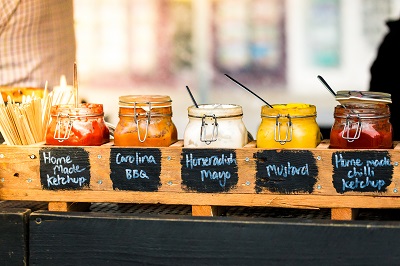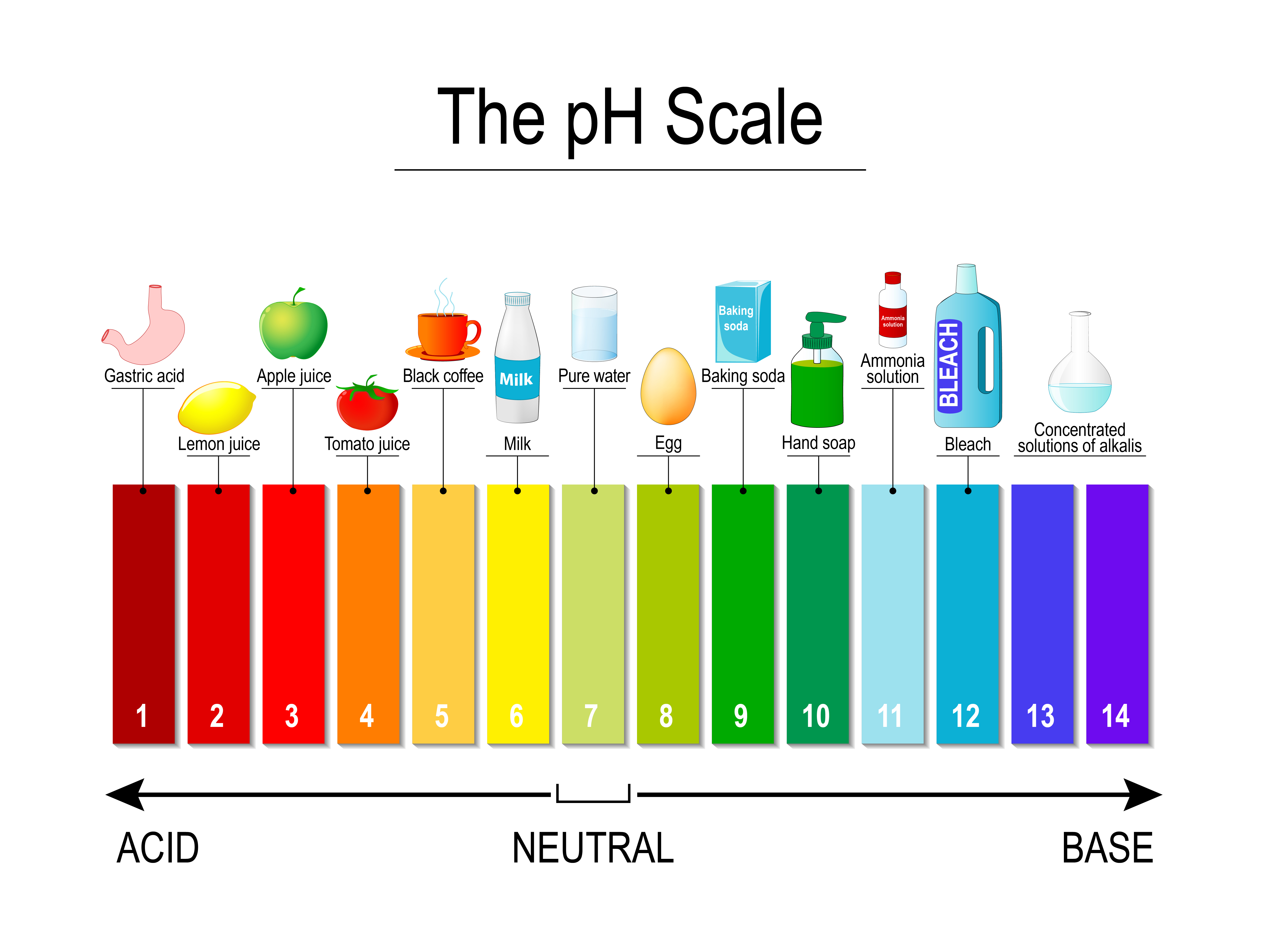Determining Non-Potentially Hazardous Foods

Non-potentially hazardous foods do not support the growth of dangerous bacteria and the formation of toxins.
This is because of their pH values, water activity values, or a combination of pH and water activity values.
- Questions about non-potentially hazardous foods?
- Contact your local Environmental Health Officer.
On This Page
- Defining Potentially and Non-Potentially Hazardous Foods
- pH and Water Activity
- How to Test Food Products
- Table 1. Foods That Have Been Heat-Treated and Then Packaged
- Table 2. Foods That Have Not Been Heat-Treated or Have Been Heat-Treated But Not Packaged
- Regulatory References
- Resources and Contacts
Defining Potentially and Non-Potentially Hazardous Foods
Potentially Hazardous Foods
Potentially hazardous foods require time or temperature control to limit the growth of dangerous microorganisms and the formation of toxins. When these foods are not prepared and held with the proper controls, they can be unsafe to consume due to the risk of foodborne illness.
Examples of potentially hazardous foods include raw or heat-treated animal products, such as meat and dairy products, and plant products that are not modified in a way that limits bacterial growth and toxins, such as raw bean sprouts and garlic in oil mixtures.
Non-Potentially Hazardous Foods
Non-potentially hazardous foods do not require time or temperature control for safety. The growth of dangerous microorganisms and the formation of toxins is limited in these foods due to their pH values, water activity values, or a combination of pH and water activity values.
To determine if a food is non-potentially hazardous, the following characteristics of the product are considered:
- pH value
- Water activity value
- Interaction of pH and water activity
- Heat treatment
- Packaging
The relationship of these characteristics to the determination of a non-potentially hazardous food is further described in the tables below.
- Table 1. Foods That Have Been Heat-Treated and Then Packaged
- Table 2. Foods That Have Not Been Heat-Treated or Have Been Heat-Treated But Not Packaged
pH and Water Activity
What is pH?
pH is a scientific measure of how acidic or basic a substance is. pH is measured on a scale of 0 to 14. A lower pH value indicates the substance is more acidic and a higher value indicates the substance is more basic.
Pure water is neutral and has a pH value of 7.0. Lemonade and vinegar are acidic and have pH values between 2.0 and 4.0. Substances like laundry detergent and ammonia are basic, with pH values of 11.0-12.0.
Food products at a pH of 4.6 or lower will control the growth of dangerous pathogens that cause botulism and other foodborne illnesses.

What is Water Activity?
Water activity (aw) is measured by how tightly bound the water is in the food product. Water activity is measured on a scale from 0 (bone-dry) to 1.0 (pure water).
Most food products have a water activity in the range of 0.2 for very dry foods to 0.99 for moist, fresh foods. Water activity is not the same thing as moisture content, however. While moist foods are likely to have greater water activity than dry foods, this is not always true.
Water activity is important because it can be used to predict the growth of harmful bacteria, yeasts, and molds. Food products with low water activity do not provide a good environment for pathogens to grow and will last longer on the shelf.
The following tables indicate the combinations of water activity and pH that will categorize a food as non-potentially hazardous:
- Table 1. Foods That Have Been Heat-Treated and Then Packaged
- Table 2. Foods That Have Not Been Heat-Treated or Have Been Heat-Treated But Not Packaged
How to Test Food Products
The Alaska State Environmental Health Laboratory can test food products for pH and water activity. The cost for pH testing is $20 per sample and the cost for water activity testing is $10 per sample.
Food producers will need to contact the Shipping and Receiving Department at the lab prior to sending any samples.
- Environmental Health Lab Shipping and Receiving
- 907-375-8231
- DEC.EH-Lab-ShippingReceiving@alaska.gov
Shipping and Receiving will give specific directions for the type of food sample being tested, including:
- Which sections must be filled out on the Food Sample Submission Form;
- How much product sample is required for the tests being requested;
- Instructions for packaging and labeling the product sample; and
- Information about payment, shipping or delivering the sample, and receiving results.
Visit the laboratory website for more information and to download the Food Sample Submission Form.
Table 1. Foods That Have Been Heat-Treated and Then Packaged
The table below indicates the combination of water activity and pH that will categorize a food as non-potentially hazardous when the food has been heat-treated and then packaged.
|
|
|
|
|---|---|---|---|
|
Non-potentially hazardous food | Non-potentially hazardous food | Non-potentially hazardous food |
|
Non-potentially hazardous food | Non-potentially hazardous food |
|
|
Non-potentially hazardous food |
|
|
*Product Assessment Needed: The producer must apply for a variance by submitting a variance application to the Food Safety and Sanitation Program. To grant the variance request, the Department will assess the product to determine if public health is protected and the purpose of the requirement is otherwise satisfied with regard to that product.
Table 2. Foods That Have Not Been Heat-Treated or Have Been Heat-Treated But Not Packaged
The table below indicates the combination of water activity and pH that will categorize a food as non-potentially hazardous when the food has not been heat-treated or when the food has been heat-treated but not packaged.
|
|
|
|
|
|---|---|---|---|---|
|
Non-potentially hazardous food | Non-potentially hazardous food | Non-potentially hazardous food | Non-potentially hazardous food |
|
Non-potentially hazardous food | Non-potentially hazardous food | Non-potentially hazardous food |
|
|
Non-potentially hazardous food | Non-potentially hazardous food |
|
|
|
Non-potentially hazardous food |
|
|
|
*Product Assessment Needed: The producer must apply for a variance by submitting a variance application to the Food Safety and Sanitation Program. To grant the variance request, the Department will assess the product to determine if public health is protected and the purpose of the requirement is otherwise satisfied with regard to that product.
Regulatory References
- 18 AAC 31 Alaska Food Code
- 18 AAC 31.012 Alaska Food Code Exemptions
Resources and Contacts
Resources
- National Center for Home Food Preservation
- Recipes, guidance, and other resources for preserving and processing food at home with a focus on food quality and safety
- Temperature Controls
- Guidelines for controlling temperatures to maintain the quality and safety of food products
Contacts
- Food Safety and Sanitation
- Find your local Environmental Health Officer
- Cooperative Extension
-
- 308 Tanana Loop, Room 101
- P.O. Box 756180
- Fairbanks, Alaska 99775
- 907-474-5211
- ces@alaska.edu
- Environmental Health Laboratory
-
- 5251 Dr. Martin Luther King, Jr. Avenue
- Anchorage, Alaska 99507
- 907-375-8200
- DEC.EH-Lab-ShippingReceiving@alaska.gov

 Indicates an external site.
Indicates an external site.